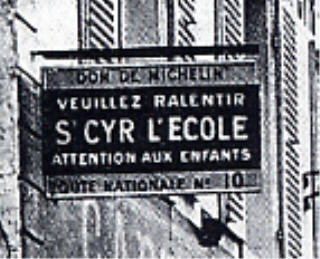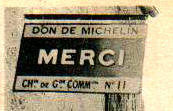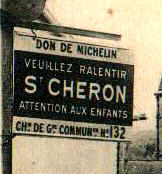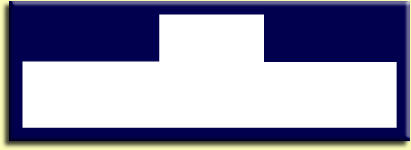





|
André Michelin is quickly going to show himself as a real pioneer of the road marking in whom he intervenes from 1908. On his initiative appear in 1910 plates "Merci" in two faces on which were indicated the name of villages and the number of roads, and registrations of safety such as " Veuillez ralentir " placed in the entrance of the town and one " Merci " to the exit. On the plate was indicated the name of the sponsor (in this particular case Michelin). Between 1911 and 1914, they are so 30.000 enamel plates which are offered and put free of charge in municipalities of France. |
|
In 1946 appears a general instruction on the road marking which cancels all the previous instructions. Homogeneity and coherence are henceforth rigorous. The administration refuses any shape of donation for the road marking. Michelin continues however its production of roadsigns in lave enamelled on reinforced concrete, but they wear no more advertising indication. The usage of the “bornes d’angle” is going to be strictly limited " to the little important intersections ". Plates disappear in profit of "arrows", on wall or on foot. But a very numerous new road-signs appear, in the forms and in the most different graphics. Until 1971, year when Michelin stops this production, every statutory roadsign will have its version on enamelled lave. |
|
|
|
From : “un demi-siècle de signalisation routière 1894-1946” par Marina Duhamel-Herz. |
|
From the day after the first world war, André Michelin begins alone the study of a device of road marking which would group together on a single support all the indications necessary for the good progress of the motorist. For roadsigns, André Michelin had the idea to use plates of enamelled lave, more resistant and rustproof, with as massive support, some reinforced concrete. |
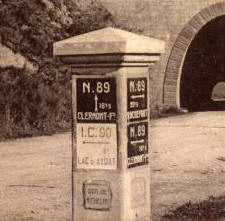
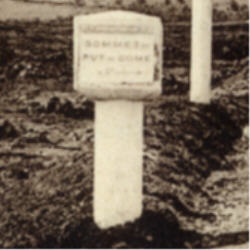
|
First models of “bornes d’angle” installed In Puy de Dôme. |
